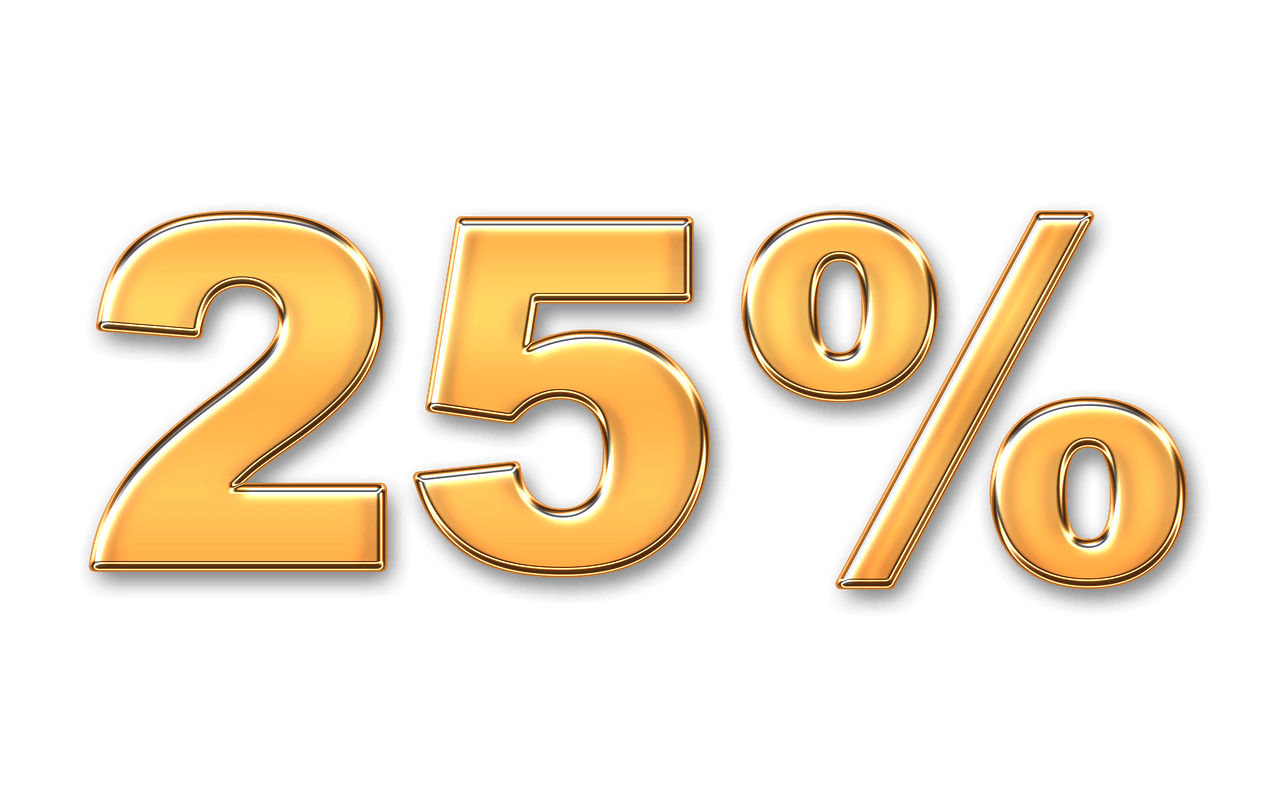Percentage Difference Calculator
Result:
Our percentage difference calculator is here to help you calculate the percentage difference between two numbers, just provide the two values and our calculator will do the rest.
Have you ever noticed how some food packages say "25% more free!" while others claim to have "40% less
sugar"? Or maybe you've heard sports commentators talk about how one team scored 15% more points than
their opponent last season.
These are all examples of percentage difference. But what exactly does
that
mean? On this page, we'll explore the concept of percentage difference, learn how to calculate it,
and understand when it's useful (and when it might be confusing).
How to Use the Percentage Difference Calculator
Using the calculator is a piece of cake. Just enter the two numbers you want to compare, click the "Calculate" button and our calculator will show you the percentage difference between them.
What is Percentage Difference?
Percentage difference tells us how much two values differ from each other, expressed as a percentage. It shows the relative difference between two numbers, rather than the actual amount they differ by.
For example, if you scored 80 out of 100 on a math test, and your friend scored 90, the actual difference in your scores is just 10 points. But the percentage difference is higher because it considers the difference relative to the original values.
It's important to distinguish percentage difference from percentage increase or decrease, which describe how a single value changes over time. Percentage difference compares two separate values at a single point in time.

Other Similar Calculators
Check out other calculators that are similar to this one.
How to Find the Percentage Difference
To calculate the percentage difference between two numbers, a and b, perform
the following calculations:
- Find the absolute difference between two numbers:
|a - b|. - Find the average of those two numbers:
(a + b) / 2. - Divide the difference by the average:
|a - b| / ((a + b) / 2). - Express the result as percentages by multiplying it by
100.
Let's go through an example problem:
Suppose the price of a laptop was $800 last year, and this year it costs $720. What is the percentage difference in price?
Following the steps:
1. Absolute difference: |800 - 720| = 80
2. Average: (800 + 720) / 2 = 760
3. Divide difference by average: 80 / 760 = 0.105263...
4. Multiply by 100: 0.105263... x 100 = 10.53%
So the percentage difference in the laptop's price is 10.53%.
The Percentage Difference Formula
The calculation we just did can be represented by this formula:
Percentage Difference = (|a - b| / ((a + b) / 2)) x 100
When plugging values into the formula, be sure to identify a and b correctly.
The order does not matter, but mixing them up will give you the wrong percentage difference.
When is Percentage Difference Useful and Confusing?
Percentage difference is a handy tool for making simple comparisons between two values, especially in fields like finance, sales, and statistics. For example:
- Comparing prices for the same product across different stores or years
- Evaluating performance differences between players, companies, or investment funds
- Contrasting survey results or poll numbers between populations
However, percentage difference can also be misleading in some situations:
- If the two original values are extremely different in magnitude, the percentage difference may seem deceptively large or small.
- For very small original values, even tiny differences can give high percentage differences that don't reflect the actual scale.
- It does not indicate the amount or direction of the difference, just the relative size.
In cases like these, it may be clearer to state the absolute difference between the two values instead.
The Meaning of Percentage Difference in Real Life
While percentage difference is used a lot in statistical analysis, we encounter it frequently in regular life too. Here are some common examples:
Shopping
- "This sweater is 30% off the original price of $59.99 - now only $41.99!"
- "The 24-pack of soda is 22% more expensive than the 12-pack at this store."
Sports
- "The home team outscored the visitors by 18% more points in their last matchup."
- "Boxer A landed 27% more punches than Boxer B in the 5th round."
Salaries
- "Employees at Company X make 12% higher salaries on average than at Company Y."
- "My paycheck this month is 5% less than my paycheck last month because of deductions."
As you can see, percentage differences allow us to quickly grasp and communicate the degree of difference between two values in a relatable way.
Frequently Asked Questions
What if I get a negative percentage difference?
If your calculation results in a negative value, it simply means that the smaller original value you used was actually the larger of the two numbers. The magnitude of the percentage difference is the same, just with a negative sign indicating which was bigger.
How is percentage difference different than percent change?
Percent change looks at how a single value changed over time, while percentage difference compares two separate values at the same time. Don't mix up the two concepts!
When should I use percentage difference instead of other methods?
Percentage difference is best when you need to express the degree of difference between two values in relative, standardized terms. For straightforward absolute differences, it may be simpler to just state the amount of difference between the numbers instead.
Can percentage difference be more than 100%?
Yes, absolutely. If one value is much larger than the other value it is being compared to, the percentage difference can easily exceed 100%. There is no theoretical limit to how high it can go.
Is percentage difference equal to percentage change?
No, percentage difference and percentage change are not the same thing. Percentage change measures how a single value changes over time, while percentage difference compares two separate values at the same point in time.
For example, if a product's price increased from $50 to $60, the percentage change in price would be 20% (an increase of $10 on the original $50 price). However, the percentage difference between the old price of $50 and the new price of $60 is 18.18% (calculated as the absolute difference of $10 divided by the original smaller value of $50, then multiplied by 100).
So while both metrics express a relative change or difference, percentage change looks at how one quantity varies temporally, whereas percentage difference compares two distinct values simultaneously.
What is the percentage difference between 20 and 30?
To calculate the percentage difference between 20 and 30, we first identify the larger and smaller values:
- Larger value = 30
- Smaller value = 20
Then we follow the percentage difference formula:
Percentage Difference = (Absolute Difference / Average Value) x 100
The absolute difference is 30 - 20 = 10.
Divide the difference by the average value: 10 / 25 = 0.4
Multiply by 100 to get the percentage: 0.4 x 100 = 40%
Therefore, the percentage difference between 20 and 30 is 40%.
When is the percentage difference equal to 100%?
The percentage difference between two values will be exactly 100% when one value is double (or half) the other value.
This is because the percentage difference formula calculates the relative difference between the two numbers by dividing their absolute difference by the original smaller value.
For example, if the two values are 15 and 5:
- Larger value = 15
- Average value = 10
- Absolute difference = 15 - 5 = 10
- Percentage difference = (10 / 10) x 100 = 100%
Since 15 is triple the value of 5, their percentage difference comes out to be precisely 100%.
Similarly, if the values were 60 and 20, the percentage difference would also be 100% because 60 is triple 20.
So in general, anytime one number is exactly tripled of the other number, their percentage difference will be 100%.
Find Calculator
Popular Calculators
Other Calculators
